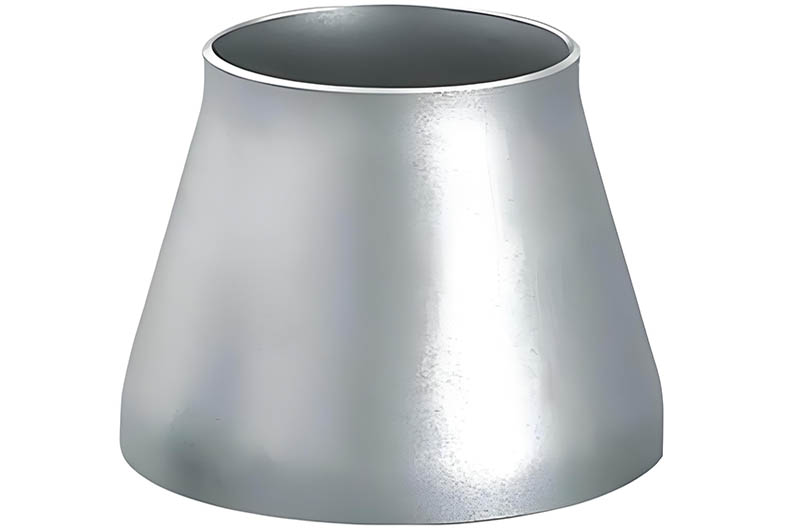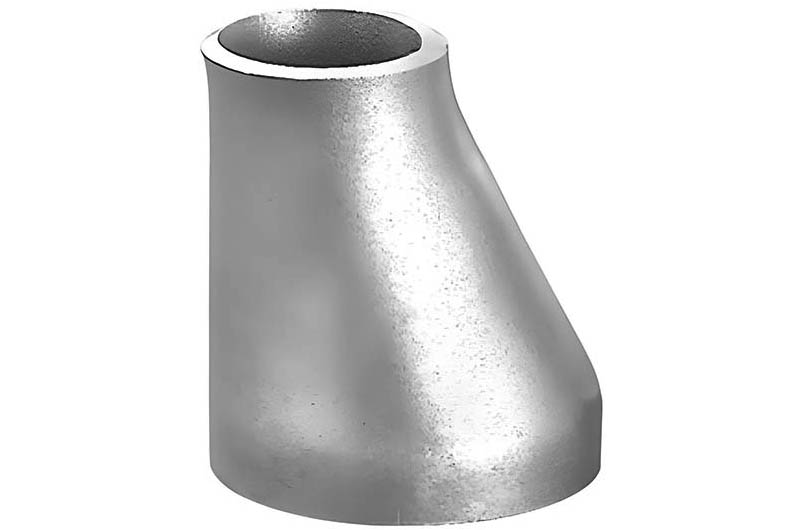Aluminum Reducer
Haomei Aluminum specializes in manufacturing aluminum alloy reducers (concentric/eccentric types), featuring lightweight design to reduce installation costs and corrosion-resistant materials for extended service life. Custom processing is available for DN15-DN600, compliant with ISO 4144 standards, with technical selection support provided!
An aluminum reducer is a pipe fitting used to connect pipelines of different diameters, ensuring smooth transition of fluids to prevent turbulence, pressure loss, or localized vortex issues caused by diameter changes.
Why choose aluminum reducers? They are 60% lighter than steel, naturally rust-resistant, and environmentally recyclable! Haomei Aluminum is an industrial-grade aluminum alloy reducer supplier, offering eccentric reducers (to prevent liquid accumulation) and concentric reducers (for symmetrical flow), covering DN25-DN500 sizes, with anodized surface treatment for salt spray resistance, and supporting non-standard customization!
As an efficient, cost-effective, and versatile pipe connection component, aluminum reducers not only facilitate smooth fluid transition between pipelines but also meet the corrosion resistance and lightweight requirements of various engineering and industrial applications. Whether in municipal projects, building water supply systems, or industrial chemical and HVAC systems, aluminum reducers play a crucial role in ensuring system efficiency and safety.

Core Functions of Aluminum Reducers
Connects two pipes of different diameters to achieve fluid (liquid, gas, or chemicals) transition, reducing turbulence and pressure loss.
Applications of Aluminum Reducers in Marine Industry
Aluminum alloy reducers not only facilitate diameter transitions to ensure the fluid dynamics of marine pipeline systems but also provide advantages in corrosion resistance, lightweight design, and cost-effectiveness, significantly reducing installation and maintenance costs while improving overall system safety and reliability.
| Marine Industry | Application Description |
| Offshore Platforms & Ship Piping Systems | On offshore platforms, oil and gas extraction platforms, and ships, pipeline systems require smooth diameter transitions. Aluminum alloy reducers ensure stable flow of liquids (such as seawater, oil, or chemical media), preventing localized pressure losses or turbulence due to sudden velocity changes. |
| Seawater Desalination & Environmental Equipment | Due to the excellent corrosion resistance of aluminum alloys, they can be used long-term in marine environments. Aluminum reducers are commonly applied in seawater desalination plants and other marine environmental protection equipment as pipe connection components. |
| Marine Engineering & Offshore Facilities | In offshore engineering, port facilities, and subsea pipeline systems, aluminum alloy reducers resist high salinity and corrosive substances in seawater, extending system lifespan and reducing maintenance costs. |
Common Specifications of Aluminum Reducers
| Specification | Description |
| Diameter Range | DN15~DN600 (1/2"~24"), custom sizes available |
| Material Grade | Features |
| 1060 | Industrial pure aluminum, good corrosion resistance, low strength |
| 6061-T6 | Heat-treated for high strength, suitable for pressure piping |
| 5052 | Medium-high strength, marine-grade corrosion resistance |
Selection & Design Considerations for Aluminum Reducers
Dimensional Parameters:
- End diameters (e.g., DN50×DN25), taper ratio (affecting transition length), and wall thickness (affecting pressure resistance).
- Reference Standards: ISO 4144 (stainless steel and aluminum threaded fittings), ASME B16.9 (factory-made welded fittings).
Operating Conditions:
- Pressure Rating: Aluminum pipe fittings generally have lower pressure resistance than steel. Selection should be based on system pressure (e.g., 0.6MPa~4.0MPa).
- Temperature Range: Aluminum maintains stable performance between -80℃~150℃. In high-temperature environments, thermal expansion coefficient (23.1×10⁻⁶/℃) should be considered.
Connection Methods:
- Flange Connection: Requires matching aluminum flanges and sealing gaskets.
- Threaded Connection: NPT, BSPT, and other thread standards, suitable for small-diameter, low-pressure systems.
- Welded Connection: TIG welding is commonly used, requiring matching welding wire (e.g., 4043 aluminum alloy).
Aluminum Reducer Material Properties
Aluminum reducers are typically made from aluminum materials. The advantages of aluminum include its lightweight nature, corrosion resistance, and low cost, making these fittings ideal for long-term use by reducing installation burdens while maintaining a long service life.
- Lightweight: Aluminum has a low density (approximately 2.7 g/cm³), making it about 60% lighter than steel fittings, which facilitates transportation and installation.
- Corrosion Resistance: Aluminum easily forms an oxide layer (Al₂O₃) on its surface, which provides resistance to corrosion from water, air, and mild acid-alkali environments, making it suitable for humid or chemical environments.
- Cost-effectiveness: Aluminum has a low raw material cost and requires less energy for processing, making it ideal for large-scale applications.

Aluminum Reducer Structural Classification
- Concentric Aluminum Reducer: The design of a concentric aluminum reducer ensures that the centerlines of the inner and outer pipes are completely aligned. This design allows fluid to pass through the fitting in a symmetrical and uniform manner, making it suitable for systems that require stable pressure distribution and smooth flow.
- Eccentric Aluminum Reducer: An eccentric aluminum reducer has misaligned centerlines. This design is often used in applications where maintaining an unobstructed bottom path in the pipeline is necessary, such as in sediment or liquid drainage systems. Adjusting the eccentricity can help reduce accumulation and improve discharge efficiency.
Aluminum Reducer Manufacturing Process
- Casting: The casting process is suitable for mass production and manufacturing complex-shaped fittings. It has cost and production efficiency advantages but may have slightly lower dimensional accuracy compared to machining.
- Machining: Using turning, spinning, or stamping processes ensures high precision and good surface finish, making it suitable for customized or high-precision requirements.
- Welded Formation: Aluminum sheets are rolled and welded into a conical tube, which is cost-effective but requires corrosion-resistant treatment for the weld seams.
- Post-treatment: The surface can undergo anodizing, sandblasting, or coating to enhance corrosion resistance and improve aesthetics.
Aluminum Reducer Advantages and Disadvantages
Aluminum Reducer Advantages
- Corrosion Resistance: Aluminum products naturally exhibit oxidation resistance and perform well in most industrial and engineering environments.
- Cost-effectiveness: Due to the low cost of aluminum materials and the maturity of processing techniques, aluminum reducers offer a high cost-performance ratio in mass production.
- Lightweight and easy to install, reducing labor and support structure costs.
Aluminum Reducer Limitations
- Lower mechanical strength compared to stainless steel; for high-pressure applications, increased wall thickness or alloy aluminum (such as 7075-T6) may be required.
- Not resistant to strong acids and alkalis (such as concentrated hydrochloric acid, sodium hydroxide), requiring an internal corrosion-resistant coating or alternative materials.
Aluminum reducers provide an efficient solution for diameter transitions in fluid transport systems due to their lightweight, corrosion resistance, and cost-effectiveness. Selection should consider fluid properties, pressure, temperature, and installation environment. Coatings or alloy upgrades may be necessary to expand their application range. Their environmental benefits align well with industrial sustainability needs, offering broad application prospects in new energy, aerospace, and other fields.
Where Else Are Aluminum Reducers Used?
- Plumbing Systems: In plumbing installations, aluminum reducers are commonly used to connect pipes of different sizes to ensure smooth water flow transitions.
- Air Conditioning and Refrigeration Systems: Aluminum reducers are used in air conditioning and refrigeration equipment to connect pipelines of varying diameters and regulate refrigerant flow.
- Industrial Pipelines: In industrial production, different diameter pipelines need to be connected, requiring the use of aluminum reducers.
- Automotive Manufacturing: In the automotive industry, aluminum reducers are used in exhaust systems, cooling systems, and fuel supply systems to accommodate different pipe diameters.
- Aerospace: In the aerospace sector, aluminum reducers are widely used in aircraft hydraulic systems, fuel systems, and pneumatic systems due to their lightweight and high-strength characteristics.
- Chemical Industry: In chemical production, aluminum reducers are widely used due to their excellent corrosion resistance in transporting various chemicals.
- Power Industry: In power generation, aluminum reducers are used to connect boilers, steam turbines, and cooling system components.
Due to their excellent physical and chemical properties, aluminum reducers have extensive applications in fluid transport systems across various industries.

